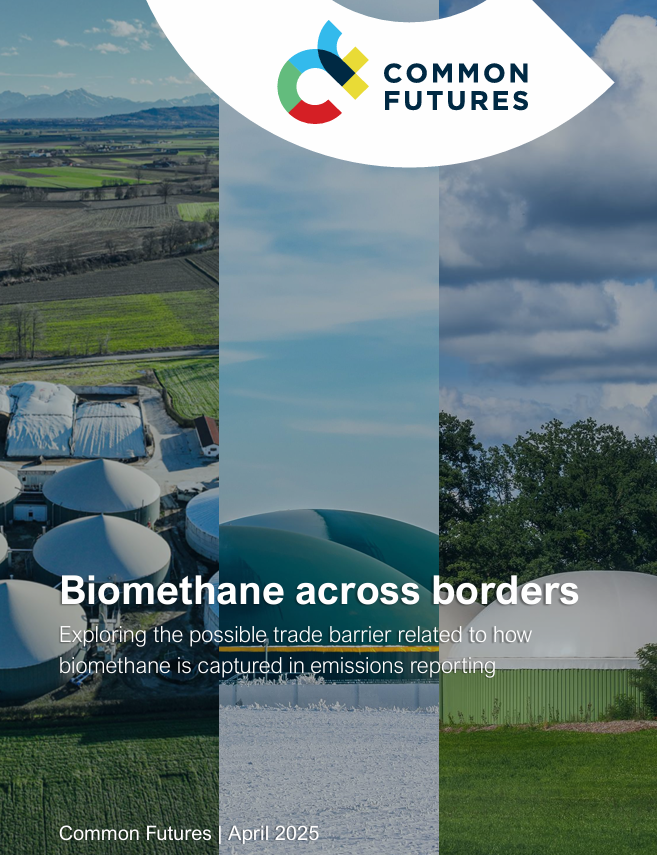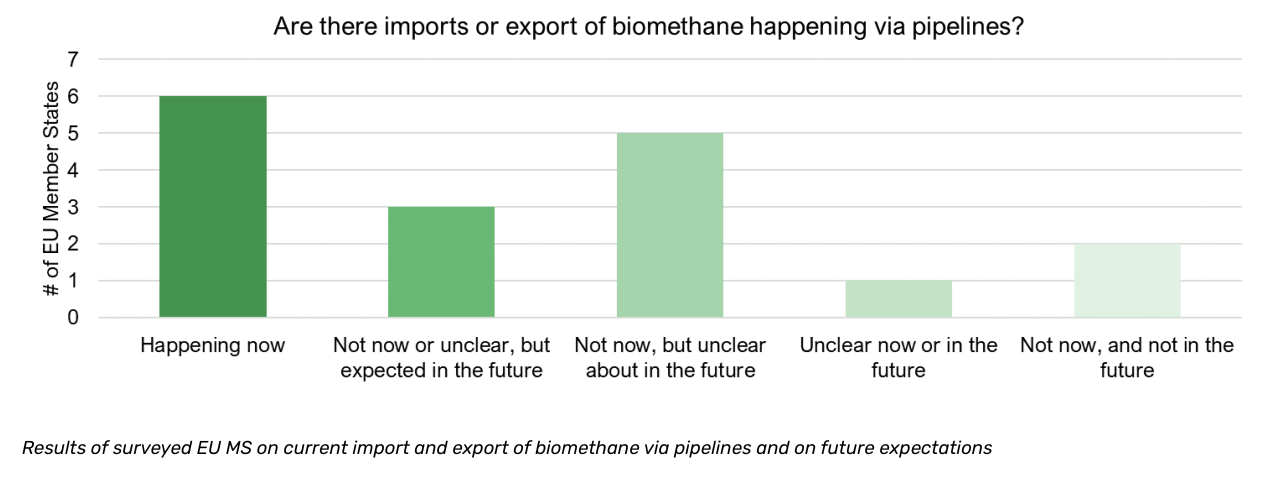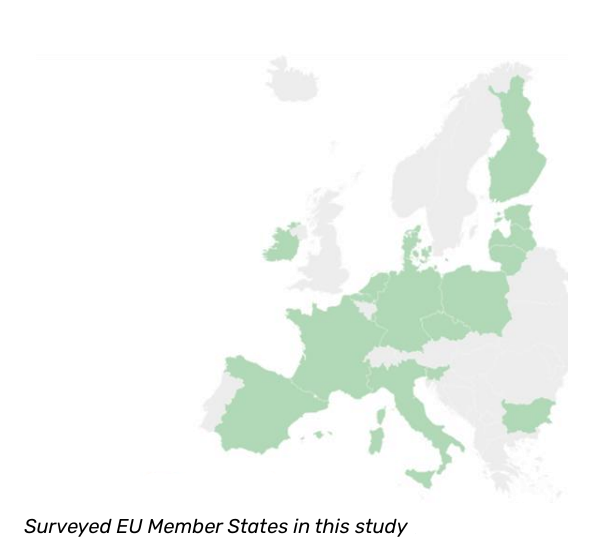 The Biomethane Industrial Partnership (BIP) has assigned Common Futures to analyse how EU Member States compile their greenhouse gas emission inventories for submission to the United Nations Framework Convention on Climate Change (UNFCCC). The reason for issuing this study was that cross-border trade of biomethane within the EU internal market is possibly hampered if emission savings from imported or exported flows of biomethane via pipelines cannot be properly reported in emission inventories used to monitor progress towards meeting climate targets under the Paris Agreement.
The Biomethane Industrial Partnership (BIP) has assigned Common Futures to analyse how EU Member States compile their greenhouse gas emission inventories for submission to the United Nations Framework Convention on Climate Change (UNFCCC). The reason for issuing this study was that cross-border trade of biomethane within the EU internal market is possibly hampered if emission savings from imported or exported flows of biomethane via pipelines cannot be properly reported in emission inventories used to monitor progress towards meeting climate targets under the Paris Agreement.
The document “Biomethane across borders: exploring the possible trade barrier related to how biomethane is captured in emissions reporting” aims to investigate the current practices by Member States to include biomethane import and export via pipelines in greenhouse gas emission inventories as submitted to the UNFCCC. As a reminder, countries that are party to the UNFCCC-treaty must report their national emissions every year to the UNFCCC secretariat. In doing this, countries follow Guidelines set out by the International Panel on Climate Change (IPCC).
Advantages
Developing an internal market allows consumers access to the most cost efficient production locations benefitting from competition among producers while also enabling producers to access the highest paying consumers across the EU, helping to create a positive business case and increase biomethane production.
An EU internal market can also support in reaching the goal set by the European Commission for the production of 35 billion cubic meters of biomethane a year by 2030, which equals around 10% of natural gas use in the EU in 2023. A well-functioning internal market is important for all Member States, yet in particular for large users in small Member States with limited domestic production.

Source: BIP Europe.
Import and export of biomethane
Biomethane is already being imported and exported via pipelines in several Member States. Interestingly, in Eurostat energy balances of ‘biogas’ in 2022, there was 535 GWh of import yet 0 GWh of export, showing that energy balances of different Member States do not align yet. In other Member States there is an expectation for import and export via pipelines in the future as biomethane production develops and demand increases. Only two did not expect import or export in the future.

Source: BIP Europe.
Main conclusions
A methodology for including emissions of imported and exported biomethane via pipelines in national greenhouse gas emission inventories in the EU is currently lacking.
Currently, the indicators are based on energy balances where imports and exports that can be physically tracked (e.g., via trucks) are taken into account, but not imports and exports via the gas grid (pipelines). This is because biomethane mixes with natural gas in pipelines and cannot be physically traced anymore. Biomethane molecules injected in the gas grid and mixed with natural gas would follow the same flows as natural gas.
IPPC Guidelines advise that ‘national emission inventories should include greenhouse gas emissions and removals that take place within the national territory’.
This means for example that emissions from coal-fired power plants are accounted in the inventory of the country where the power plant is located because that is where emissions take place. If the produced electricity is exported to another country, the importing country does not include any emissions in its inventory. In the case of biomethane the emissions take place where it is combusted, rather than at the production location. According to the Guidelines, biomethane which is combusted and consumed within the country of production counts as zero CO2 emissions in national emissions inventories.
EU regulation on creating emission inventories currently does not yet include the option to use mass balancing. Thus, all imported or exported biomethane via pipelines counts as natural gas.
National energy statistics do not take into account biomethane exported and imported via pipelines based on mass balancing, and subsequently, the emissions and emission savings linked to trade flows of biomethane via pipelines are currently not included in national emission inventories. However, trade flows of biomethane via pipelines are reported in a separate tool, the SHARES tool, established for the purpose of the EU RED.
EU Member States surveyed for the purpose of this study were not yet sure how they should deal with biomethane in creating emission inventories.
Around half of the Member States that were surveyed as part of this study account for the emissions of biomethane which are produced nationally and injected into the grid (i.e. counting imports and exports as natural gas). Some Member States aim to use mass balancing approaches to account for import or export of biomethane via pipelines, while others have not yet developed a methodology or are unclear on what the methodology may be. More than half of the surveyed Member States indicated that import and export of biomethane is happening or expect this to happen in the future.
Method for creating national emission inventories
The step-by-step method for creating an emissions inventory by Member States based on energy balances and statistics includes the following steps:
1. Energy statistics
- Eurostat sends questionnaires prefilled with historic data to Member States in order to report energy statistics.
- Member States report on their energy statistics (revising historic data when needed and adding the new data for the last reference year) and send these to Eurostat. The rules for this and the rules for reporting energy statistics are laid down in Regulation 1099/2008 on Energy Statistics.
2. Energy Balances
- Based on statistics, Member States and Eurostat create energy balances.
3. Emission inventories
- Using these energy balances (which serve different purposes), Member States create emission inventories and send these to the EC via the European Environment Agency (EEA) and the UNFCCC Secretariat. This is done in rules laid down in the Governance Regulation 2018/1999.
- The EEA compiles an emission inventory for the EU-27 and also sends this to the UNFCCC. This parallel reporting stems from the fact that both individual Member States and the EU as a whole are party to the UNFCCC.
Two EU regulations are strongly linked: the Governance Regulation 2018/1999 mandates that the energy balances used for creating the emission inventory must be consistent with energy balances that are created based on Energy Statistics Regulation 1099/2008. This is done in order to create harmonised and comparable reporting for energy statistics and emissions, as energy balances serve different purposes.
Download the full research document on the BIP Europe website

Source: BIP Europe.
In conducting this study, insights were gathered from experts between May and August 2024 from the Intergovernmental Panel on Climate Change (IPCC), Eurostat, European Environment Agency, and experts from ministries and national statistic offices and agencies of 17 Member States: Belgium (Flanders), Bulgaria, Czech Republic, Denmark, Estonia, Finland, France, Germany, Ireland, Italy, Latvia, Lithuania, Luxembourg, Netherlands, Poland, Slovenia, Spain. Additionally, desk research was completed on the IPCC Guidelines and relevant EU regulation.